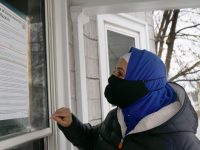Mold 101: Everything you need to know about mold

Mold is a fungus that can be found both indoors and outdoors. It thrives in moist environments, so it can be a problem in areas with water damage or high levels of humidity. Mold can cause various health problems, including respiratory issues, skin irritation, and allergies. But how does mold occur in the first place?
How is mold formed?
Mold is a fungus that grows in moist environments. It can be found both indoors and outdoors, and it thrives in areas where there is water damage or high levels of humidity. Mold can cause various health problems, including respiratory issues, skin irritation, and allergies.
How common is mold in buildings?
Molds are common in both indoor and outdoor environments. Mold can be found almost anywhere there is moisture. Mold grows best in warm, humid climates, so areas with water damage or high humidity levels are ideal for mold growth.
How do I know if I have a mold problem?
If you suspect that you have a mold problem, there are a few things you can look for. Mold often appears as black, green, or white patches on surfaces. It can also cause musty odors and respiratory problems. If you think you may have a mold problem, it’s essential to contact a mold removal specialist right away.
How does mold affect people?
Exposure to damp or moldy environments may result in various health problems. Some individuals are allergic to molds, while others aren’t. People have varying tolerance to mold and while some may display obvious symptoms like stuffy nose, wheezing, and red or dry eyes upon immediate exposure, others take a while before showing any signs. People who are allergic to mold or have asthma may display more severe symptoms. Workers exposed to huge amounts of molds in the workplace, such as farmers dealing with moldy hay fields, can experience severe responses that include high fever and shortness of breath.
A research carried out by the IOM in 2004 showed enough proof to link indoor mold exposure with upper respiratory tract problems, such as cough and wheeze, in otherwise healthy people. Participants with Asthama showed aggravated symptoms, and hypersensitivity pneumonitis was found in individuals susceptible to immune-mediated disease.
The World Health Organization (WHO) released the updated WHO Indoor Air Quality Guidelines in 2009. Other studies in recent years have suggested a link between early mold exposure and asthma development among some children, particularly those that may be genetically predisposed to asthma development, as well as a possible correlation between respiratory allergies and living conditions.
What are some of the most common symptoms of mold?
The most common symptoms of mold exposure include respiratory problems, skin irritation, and allergies. If you think you may have a mold problem, it’s essential to contact a mold removal specialist right away.If you are experiencing any of these symptoms, please consult with your health care professional:
– Respiratory Problems: Coughing, wheezing, chest tightness
– Skin Irritation: Rash, hives, swelling
– Allergies: Sneezing, watery eyes, itchy eyes/nose/throat, asthma attacks.
Who is most at risk from a possible mold infestation?
Mold exposure can cause various health problems, but some people are more susceptible than others. People with allergies to molds or asthma are at an increased risk for mold-related health problems. Children and the elderly are also more vulnerable to mold exposure. If you think you may have a mold problem, it’s essential to contact a mold removal specialist right away.
How can you keep mold out of your buildings and homes?
The best way to prevent mold growth is to control moisture. Repair any leaks and keep the indoor humidity level low. If mold does grow in your home or office, it’s essential to clean it up right away. However, DIY mold remediations are not exactly the best way to get rid of stubborn mold. Many things can go wrong with DIY mold remediation. It’s always best to contact a mold removal specialist.
What should I do if I think I have mold in my home?
If you suspect that you have a mold problem, there are a few things you can do:
- Try to identify the source of the moisture that is causing the mold growth.
- Increase ventilation in the affected area and use a dehumidifier to remove excess moisture.
- Contact a mold removal specialist for help.
How serious of a threat does mold possess to you and your house realistically?
Mold is a severe threat to both you and your house. It can cause various health problems, and it’s essential to remove it as soon as possible. If you are experiencing any common symptoms, please consult with your health care professional.
What should I do if my family starts exhibiting mold-related illnesses?
If your family begins exhibiting mold-related illnesses, it’s essential to seek medical help right away. Do not try to treat mold exposure on your own; several things can go wrong. Consult with your health care professional about the best way to address the situation.







